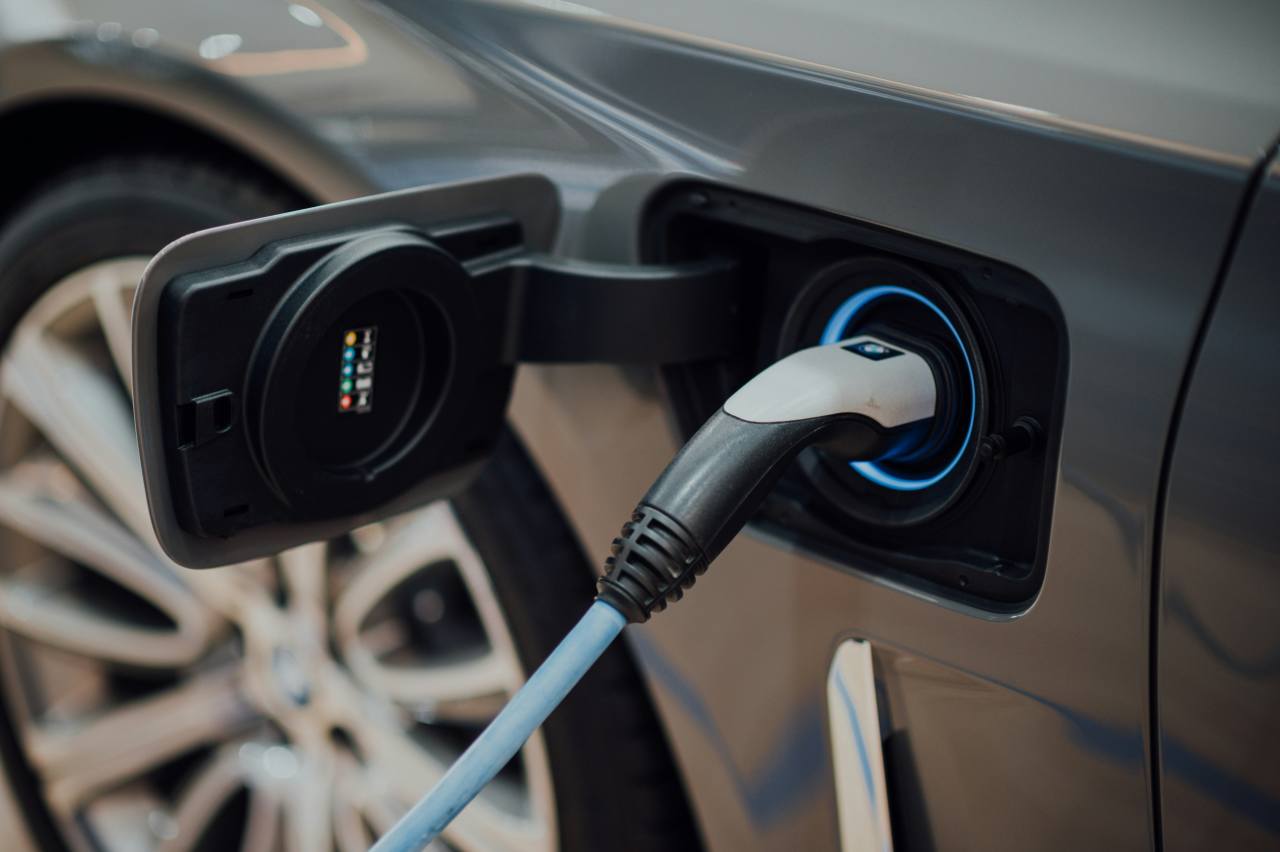Kia's Niro is the very definition of a multi-prong attack on the eco-friendly SUV space, essentially covering all green-vehicle bases with a hybrid, plug-in hybrid, and fully electric version in an effort to ensure there's something for everyone.
Short answer? Whether you want to never have to plug in, plug in occasionally, or only ever plug in, there's a Niro in the family for you.
But that's the green stuff covered, sure. But what about the rest of the small SUV checklist? Can the Niro stand on its own four wheels against the heavy hitters in the segment?
And just as important, despite only recently arriving in Australia, the Niro actually launched globally in 2017, and was then updated in 2020 (which is the one we've got as a MY22 model). Weirder still, a new one is coming in around a year.
So should you dive into the Niro now, or wait for it to be replaced by a newer model ? We spent a week with the Niro Plug-In Hybrid Sport to find out.
Kia Niro 2021: Phev Sport (hybrid)
| Engine Type | Inline 4, 1.6L |
|---|---|
| Fuel Type | Unleaded Petrol/Electric |
| Fuel Efficiency | 1.3L/100km (combined) |
| Seating | 5 |
| Price From | $42,790 - $49,720 |
Price and features - Does it represent good value for the price? What features does it come with?
Our Kia Niro PHEV Sport sits atop a two-strong plug-in range, and it will set you back a hefty $50,490 (MSRP) in NSW. The lesser S trim, by the way, is $46,590 (MSRP).
And yes, that is quite a lot of money. You can jump into a much bigger Mitsubishi Outlander PHEV for $47,990 (MSRP), for example, while the MG HS PHEV starts at $47,990 drive-away, and the Mitsubishi Eclipse Cross PHEV starts at $49,990.

If you want a Kia Niro PHEV on the road in NSW, then you're staring down the barrel of $49,990 for the S, and $53,990 for the Sport.
And that's a sizeable investment for a small SUV, no matter what magic is hiding under its bonnet. So what do you get?
The Kia Niro S models get LED DRLs, LED rear lighting, halogen automatic headlights, auto wipers and roof rails outside, while in the cabin you'll find a leather wrapped wheel, part-leather/part-cloth seat materials and dual zone air-conditioning.

The tech offering includes an 8.0-inch touchscreen with wireless Apple CarPlay and wireless/wired Android Auto. It pairs with a six-speaker stereo, that also gets digital radio. There's a second 4.2-inch screen in the driver's binnacle, as well as two USB ports for all your charging needs.
Step up to our Sport and you get the same-size alloys and general exterior look, but you do get LED front lights. In the cabin, you'll welcome a bigger 10.25-inch touchscreen which now gets NAV, as well as faux-leather seats, paddle shifters for the steering wheel and alloy pedals.
Design - Is there anything interesting about its design?
It might not be the newest car in Australia (despite, technically, being new), but I still reckon the Niro cuts a fine, if a little old-school, figure on the road.
Looking more cute than mean, the Niro's front end has the kind of squished-looking grille of slightly older Kias, only with an active black-filled mesh grille that hints at the aerodynamic slipperiness it wants achieve, with its headlights bleeding backwards into the body panels.

The 16-inch alloys don't exactly crowd the wheel arches, but framed as they are by the black plastic embellishment above, and with their black inserts (again an aero play), they suit the placid demeanour of the Niro.
The best exterior feature, though, is probably the lightly raked roofline, which gives the Niro's side profile a sleeker and vaguely sportier feel – even if its an image that doesn't quite materialise from behind the wheel.

In the cabin, it's all very Kia – a dark, monotone colour scheme that looks like a space that light can't escape – with some thoughtful material choices and a strong tech offering that dominates the front of the cabin.
Practicality - How practical is the space inside?
Let's start with the numbers, shall we? Our plug-in Niro stretches 4355mm in length, 1805mm in width and 1545mm in height. And that puts it somewhere in the middle of the small SUV space.
For perspective, the Kia Seltos – which exists in the same small SUV category in Australia's VFACT's sales charts – is slightly longer and taller, at 4370mm, 1800mm and 1620mm respectively, while the Mazda CX-3 weighs in at 4275mm, 1765mm and 1535mm.

As a result, cabin space is probably around what you're expecting, too. There's enough room up front for two adults to travel without awkward elbow bumps, and there's plenty of niceties, like the twin-zone climate, the bottle holders in the doors, the twin cupholders in the central console, and the easy device charging.
Step into the back, though, and the space does start to feel a little more sparse, and tight (likely owing to the battery under the floor panel).
Backseat riders do get air vents, and bottle holders, but that's about it. I don't want to sound like I'm harping on here, but should you choose to forgo the plug-in powertrain, there are some seriously premium options in the $50k-plus price bracket.

Step around to the boot and you'll find a useable space, though one that's on the smaller side, possibly owing to the second battery hidden beneath the floor panel.
Kia says you'll get 324 litres of storage space with the rear seats in place, which grows to 1322 litres with the rear seats folded flat. There's no spare here, either. A tyre repair kit will be your only saviour in the case of a flat.

Drivetrain - What are the key stats for the drivetrain?
The Kia Niro PHEV Sport pairs a 1.6-litre, four-cylinder petrol engine –producing 77.2kW and 147Nm on its own – with an electric motor that adds its own 44.5kW and 170Nm to the front wheels. Kia says the combined outputs total 104kW and 265Nm.
It pairs with a six-speed DCT gearbox that drives the front wheels, and is equipped with Eco and Normal drive modes.
Energy consumption - How much does it consume? What’s the range like, and what it’s like to recharge/refuel?
Ok, so this is always a little complicated for PHEVs. The official fuel claim for the Niro is 1.3L/100km, with emissions pegged at 29g/km.
But those numbers – and this isn't exclusive to Kia by any means – are calculated in a way that assumes you'll always have battery power, which isn't really the point of a plug-in hybrid.

Still, we were averaging an impressive 4.3L/100km over almost 400km, which is pretty nifty for a real-world test.
Now, for the electric side of the equation. The Niro PHEV gets two lithium-ion batteries (one under the rear seat and another under a panel in the boot) which deliver a combined capacity of 8.9kWh, and add 117kg in weight.
They will give the Niro a 58km pure-electric driving range (tested on the NEDC cycle), and when its Type 2 capable is plugged into a 3.3kW wall charger, it will take two hours and 15 minutes to recharge, or around four hours when plugged into your regular mains at home.
Driving - What's it like to drive?
If familiarity is at the core of the EV-transition experience — so if you’re nervous about your first electrified vehicle feeling weird and space-age — then you’ll find plenty to like about the normality of the Kia Niro PHEV drive experience.
Slip behind the wheel, fire it up, and — if you want to – you can pretty easily forget your driving something electrified at all.
Part of that is Kia’s decision to opt for a familiar six-speed automatic gearbox. Most in the PHEV space pair their powertrains with a single-speed ‘box that tends to whir and whine, but the Niro’s doesn’t, instead behaving much like you’d expect it to.

That’s mostly a good thing, but it is occasionally irksome, especially when, on take-off, the Niro can feel a little jerky and bumpy in its lower gears. This is a trait familiar to those who own one of Kia’s 1.0 litre cars, in which there is often a delay on take-off like the little engine is figuring out how to best distribute its grunt.
It’s the same in the Niro at times, though I suspect this time it’s because the gearbox is trying to figure out how to digest its combination of power.
It's far from a deal-breaker, though, and the Niro drive experience is otherwise refreshingly familiar. The steering is light and predictable, the ride - though not tuned in Australia - serves up a comfortable, confident experience on most road surfaces (it can feel jittery and unsettled over harsher imperfections), and the cabin ambience is peaceful, whether you’re in EV mode of just letting the car do the thinking for you.
My one complaint, though, is that it might not feel special enough to justify your investment.
Remember, this is an older car — and a new one is coming, though we can’t say for sure it will make it here — and the Niro's casual drive experience does make you wonder why you wouldn’t just buy a top-spec Seltos GT Line, save the electric motor of course, and put several thousand dollars back into your pocket.
Warranty & Safety Rating
Safety - What safety equipment is fitted? What safety rating?
The Kia Niro PHEV safety story begins with seven airbags, including a driver’s knee bag, and the usual suite of braking and traction aids.
There’s also forward AEB with pedestrian and cyclist detection, Lane Keep Assist, Lane Follow Assist with active cruise control, Blind Spot Detection, Rear Cross-Traffic Collision Alert and a rear-view camera with rear parking sensors.
The Kia Niro PHEV scored a five-star ANCAP safety rating (adopted from international scoring) when tested in 2016.
Ownership - What does it cost to own? What warranty is offered?
The Niro PHEV Sport is covered by Kia's seven-year, unlimited-kilometre warranty, which is among the most comprehensive warranty periods currently offered in Australia.
It will require servicing every 12 months or 15,000kms, and the brand’s capped-price servicing program limits the cost for each visit to the service centre to $286, $487, $355, $871, $322, $620 and $599 respectively, for a total $3500 for the first seven years of ownership.
Verdict
The Kia Niro deserves plaudits for its multi-prong approach to eco-friendly motoring, and the PHEV Sport ticks plenty of boxes along the way.
The price might raise some eyebrows, as might the fact that, despite being new for us, it's not that far of being replaced by a newer model – not to mention the imminent arrival of the impressive Kia EV6 range which will really scratch your electric itch.
But if you're keen on a small SUV you can plug in, and still traipse across the country in, then the Kia Niro PHEV Sport is no doubt on your list.
Pricing Guides














































.png)








.png)



.jpg)
jpg.jpg)

.jpg)

.jpg)
.jpeg)




.jpg)
Comments